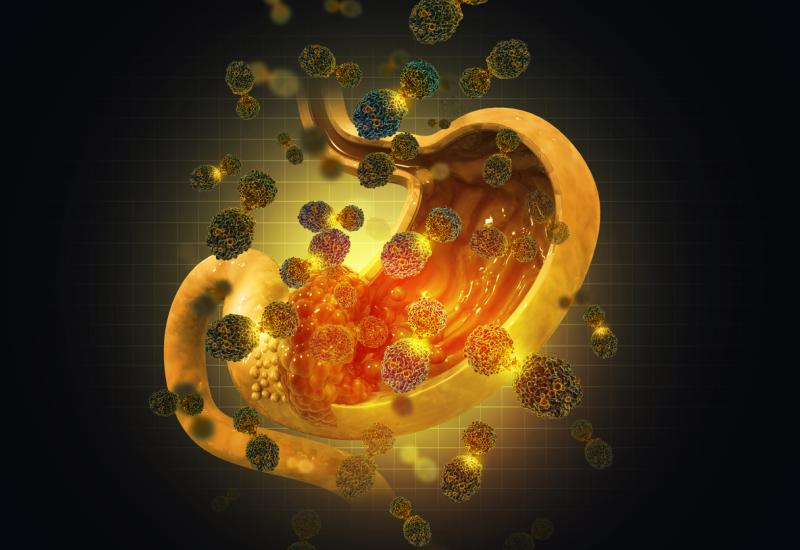
Lack of overall survival doesn't stop Flaura2
Approval on the basis of Flaura2 is part of a double success for Astra's Tagrisso, which has also scored in Laura.
Approval on the basis of Flaura2 is part of a double success for Astra's Tagrisso, which has also scored in Laura.

Swift US approval, under priority review, for AstraZeneca’s Tagrisso plus chemo in first-line EGFR-positive lung cancer might cause controversy given that it’s based solely on progression-free survival in the Flaura2 trial, which has yet to show an overall survival benefit.
However, Astra has revealed the hazard ratios from Flaura2’s second interim analysis, showing crucially that with longer follow-up the OS analysis is moving in the right direction, and perhaps this swayed the FDA. With the group separately claiming a win in Tagrisso’s Laura trial, in stage III NSCLC maintenance, Johnson & Johnson will be keeping a close eye on developments.
That’s because J&J’s Rybrevant is slowly challenging in EGFR-mutated NSCLC, where Tagrisso reigns supreme. J&J’s Mariposa study, comparing Rybrevant plus lazertinib against Tagrisso, forms part of a US regulatory filing J&J said it had submitted last December; there has been no confirmation whether the FDA has accepted this, and if so what the action date is.
At least J&J can rest easy that Tagrisso monotherapy was the correct comparator to use in Mariposa. Even though a Tagrisso plus chemo combo is now approved, there are lingering questions about safety and subgroup data in Flaura2, and when those data were presented at last year’s World Lung conference the discussant pointedly said Tagrisso plus chemo shouldn’t yet be considered standard of care.
OS benefit emerging?
One of these questions concerned the lack of an OS benefit, and here there is now hope that this might be emerging.
At World Lung a first interim analysis showed no OS benefit whatever, and wide confidence intervals. Now Astra has revealed that a second analysis yielded a 25% reduction in risk of death; though this was still short of statistical significance, the CI upper bound is below 1.0. Final OS analysis is due at 60% data maturity.
Though it’s unclear when Rybrevant plus lazertinib might be approved in this setting, at least J&J has some time on its hands, but that’s not to say that its Mariposa win was unequivocal: data at last year’s ESMO suggested that Tagrisso had underperformed in Mariposa’s comparator cohort.
Development of Flaura2’s overall survival endpoint
Disclosed | Data maturity* | OS hazard ratio | 95% confidence intervals | |
|---|---|---|---|---|
| Interim analysis 1 | World Lung 2023 | 27% | 0.90 | 0.65, 1.24 |
| Interim analysis 2 | 16 Feb 2024 press release | 41% | 0.75 | 0.57, 0.97 |
| Final analysis | NA | 60% | Not reached at Feb 2024 | |
Note: *Flaura2 enrolled 557 patients across its two cohorts, and the percentages indicate the number of deaths that trigger each analysis. Source: AstraZeneca & NEJM.
Tagrisso could put yet more pressure on J&J, having succeeded in the Laura study. This concerned EGFR-mutant NSCLC, the same disease that’s the basis for Tagrisso’s current approvals in front-line metastatic and adjuvant uses, but looked at an intermediate setting: inoperable stage III (pre-metastatic) NSCLC, still in response to chemoradiation.
This is a similar setting to the space Astra’s anti-PD-1 MAb Imfinzi has carved out for itself on the basis of the Pacific study. Astra claims that 15% of NSCLC patients now present with unresectable stage III disease. J&J doesn’t appear to be testing Rybrevant specifically in stage III NSCLC.
Laura compared Tagrisso against placebo, and Astra today toplined a win on its primary endpoint, PFS. OS data were said to be immature but suggestive of a “favourable trend”, and full results will be presented at a medical conference – ASCO seems likely – and filed with regulatory agencies.
And the company will be hoping to broaden Tagrisso’s label into neoadjuvant use, where the Neodaura study is due to read out later this year. The drug’s approved adjuvant use is in stage IB-IIIA disease, on the basis of Adaura, and the Adaura2 trial (adjuvant stage IA2-IA3) is under way.
2001













